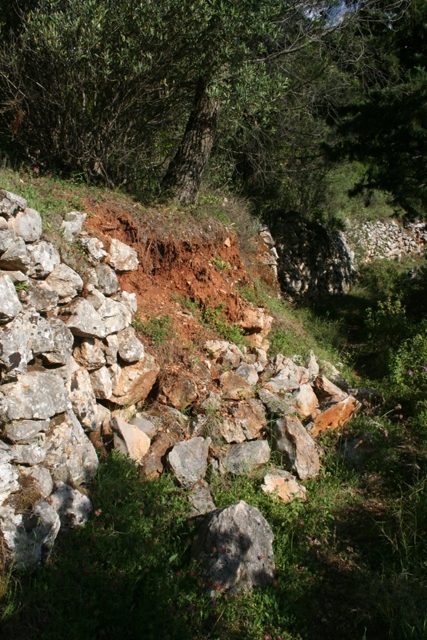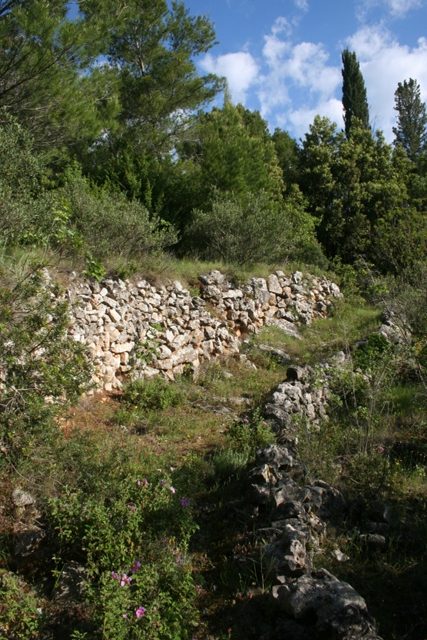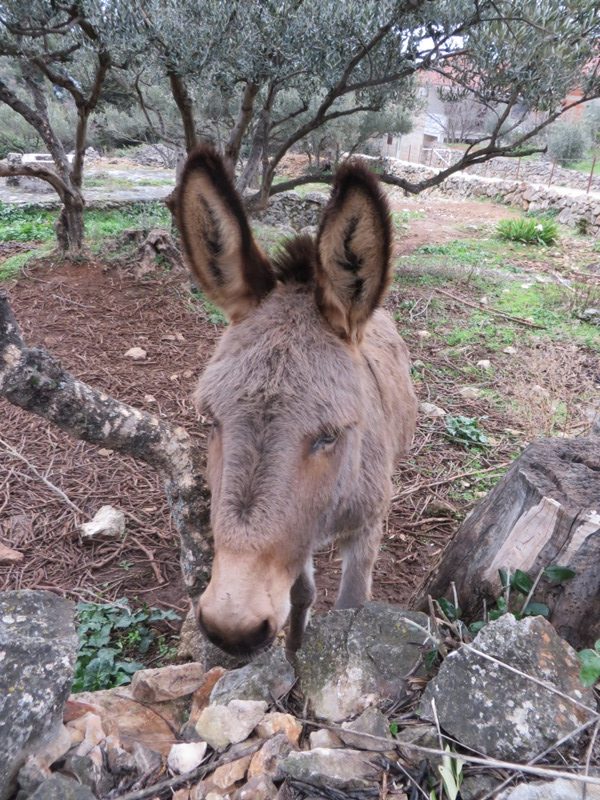Weeds, weeds, weeds….

This week: University works; Wild Flowers; In the Greenhouse; A bit of history; Garden casualties;
Weeds, weeds, weeds…..
I’ve just about cut down every weed this week. Those not cut down have been dug out (eg. long rooted thistles) and all the greenery has been left on the surface to turn brown and rot down.
I say “just about” because I don’t want to cut everything, as I need to leave some food plants for this year’s Katydid and grasshopper nymphs which will be appearing soon, together with the caterpillars from a variety of butterfly and moth species.

The problem has been the change in the rainfall pattern, which had delivered large quantities of precipitation, at a time of year when the weather is warm enough for a variety of weeds to grow and thrive.
In amongst the weeds I’ve found plants I want to keep. I feel guilty that I’m not making more progress than I am, but as all building work has been stopped by the municipality for the summer, so visitors can have a nice stay, I don’t feel under pressure to get things like the dry stone wall finished.
University works
My Dundee University soil science course is interesting and the subjects are thought provoking – probably just as they should be. They spurned me on to finish a project I started then abandoned in the spring.
I’d like to have a poly-tunnel against the south facing wall in the top orchard. I put the steel hoops in, but because of difficulty in bending one of the lengths of steel that they sent, which was the wrong diameter, I left it and moved on to the dry stone walls and paths..

Coming back to the poly-tunnel after the rain, it is a little, shall we say, overgrown? I set too with a pair of shears. As we are at the start of the afternoon siesta, I didn’t want to use the noisy strimmer, and the old fashioned way is good exercise too.
As I was cutting through some grass, young briars and wild fennel, I saw several magenta flowers. I recognised these straight away as Wild Gladioli.

I had a group in the orchard previously, near the very old olive tree, but there have been none for a couple of years and I thought I had lost them. So to find this new group where last year I had tomatoes was a surprise.
These are Gladiolus italicus, rather than Gladiolus illyricus, which is also a Mediterranean native.
The clue is in the flowers. Italicus flowers are opposite each other on the flower spike, Illyricus flowers are all on the same side, like cultivated Gladioli. Both are common and widespread across the Mediterranean basin.
As I chopped back some more of the thicket, I saw the unmistakable climbing tendrils of a wild pea, Lathyrus, although which one I will have to wait and see when (if) it flowers.

I’ve not sown any sweet pea varieties, so this has been brought into the orchard by birds. It has been in flower because as i explored to try and find the roots, there are seed pods forming.

Once the weeds were cut back, I left everything on the surface to dry. This is the essence of No Dig gardening; disturb the soil s little as possible so that weed seeds are not brought to the surface; mulch using the cut herbage, which will rot and nourish the soil underneath and keep chopping the tops off the perennials and deep rooted weeds that grow through.
Wild flowers
I had a walk up to St Michael’s Church on Sunday afternoon and the old donkey track is quite overgrown with grasses, but there are a larger numbers of wild flowers than usually visible in late May.


What is also visible is the increasing amount of damage to the ancient walls being done by the Wild Boar. In several places along the track sections of the wall have been destroyed by these 180 kilogram bulldozers.

I have made a practice of putting stones back when I have seen they have been knocked off the top of the walls.
At least that is stones that I can lift. But repairing the damage to whole lengths of wall is beyond anything I can repair. If this damage continues, the path will eventually become unusable.

From being passable by a mountain bike and something like the Kolcraft All Terrain child’s adventure stroller

I would have to now say that the track is limited to foot traffic (good ankle supporting boots required) and the odd intrepid donkey.
We have a lady in Dol Sv. Maria who has donkeys, one of which is called Mercedes. There are also several donkeys in Verbanj which I occasionally take carrots and apples for.

The Wild Boar are becoming a nuisance. They breed freely, and although they are hunted for meat, their numbers seem to be increasing. They venture down into the village and take potatoes from the fields, uprooting an entire crop in a couple of visits.
If you see photographs of the young, they look cute. The adults are dangerous and every year vehicles are seriously damaged in road collisions with adults.
In the greenhouse
One thing about writing a blog is that it gives you a point of reference. I wrote on 27th April about receiving some Bougainvillea cuttings, which I put into the heated propagator.

I have been changing the plastic bags every couple of days so that the cuttings don’t get mildew, but are still in a warm, humid atmosphere, conducive to rooting.
This week when I was changing the plastic, the propagator didn’t seem as warm as before, although the thermostat said it was at the correct temperature. Then I noticed that the sand bed in the base had almost completely dried out. I added a litre of water to moisten it all again.
Three quarters of the cuttings have small green leaves, suggesting they are still alive, although there is no sign of roots yet.

However the received wisdom is that it takes eight to twelve weeks for the cuttings to root, so after just four weeks I am some way off.
The tomatoes that I am growing as a hydroponics trial are all growing well.

Flowers and small fruit are present, but what I think I have learned is that I need to plant earlier for a spring crop. I’ll start some seeds in the summer for autumn planting for a late crop.
When I can grow a crop outside in the summer, there is little point in having them take space up in the greenhouse. But it is a useful experiment though and a good learning experience for the future.
The two potato grow bags that I have are doing OK. The single King Edward that I planted in one of the bags is really growing well and has been earthed up twice. The Sweet Potato that I put into the second bag is growing, but is hardly vigorous. Again, time will tell how successful the experiment has been.
A bit of History
I am often asked to help to identify or to trace the identity of old police motorcycles. My specialist subject is the Triumph Saint, 1966 – 1978, and no, I haven’t been in Mastermind black chair yet!

Just occasionally, I can match a motorcycle which someone has bought on eBay, with a photograph of the machine in service.

What I do get asked regularly is for advice on researching these historic and classic machines, so in a little bit of spare time this week, I wrote a DiY guide.
There is more and more interest in old vehicles generally, and whilst it is possible to trace some history, the older the vehicle, the less chance as time passes.
This week I created a 25 page guide as an eBook, entitled “Researching the history of your pride and joy“. If you would like a copy, it’s available to download from the link. Right mouse click to download the pdf, or click the link to read it. The file is 1.5MB in size.
Garden casualties
I’m writing this early on Saturday morning. I started about 05:30 and the sun has just risen over the hills between Dol and Verbanj to the east, so is flooding the study with a soft, warm light.
I can hear multiple birds calling. The Swallows are wheeling around the sky chattering. In the distance there is a Cockerel crowing, towards the Plain I can hear a Hoopoe, a Golden Oriole is singing and close by Great Tits are chirping away. But by far the most pleasant song is the Nightingale.
I recorded the song of the Nightingale as part of the local soundscape in 2017. But this year for the first time, I have had them in the orchards, very close to the buildings, singing day and night.
They are diminutive brown birds about the size of a Robin, so on when on Friday I found a small bird dead on the path between the orchards, I suspected straight away that it might be a Nightingale.

Not that I have seen one close up before. The opposite in fact, I have barely glimpsed them, even though they have been calling no more than 10 meters from where I have been standing.
My ornithologist neighbour Steve confirmed straight away that it was a Nightingale. With chestnut coloured tail feathers and a cream grey chest, they are not the most noticeable of our summer visitors. It is their beautiful, melodic song which distinguishes them.

There was no signs of violence, so it is unlikely to be a victim of a cat. In fact Callie had walked past the body and didn’t react at all, so the cause of death is a mystery.
I am certain that a pair are nesting at the edge on my land. They nest close to the ground, out of sight in well protected thickets. On my boundary I have an old Pomegranate tree, with multiple stems, surrounded by grass and with a lot of bramble briars around the base. An ideal secluded, protected location to build a nest.
This morning, I still have the a nightingale singing close to the kitchen from the Pomegranate tree, but none the less, it is sad to find such a lovely songster dead, one of the many migrants who cross the Sahara desert twice every year in the migration between their winter home and the summer breeding grounds here in Dol. NRC
One Response
Dorcey Wingo
Have also had a long love affair with the Mockingbird, Norman.
I’ll email you a sketch I did of one that woke me so dependably every morning near Las Cruces, New Mexico.
Cheers!